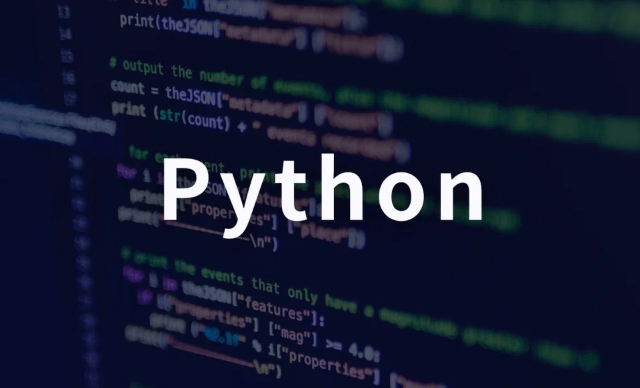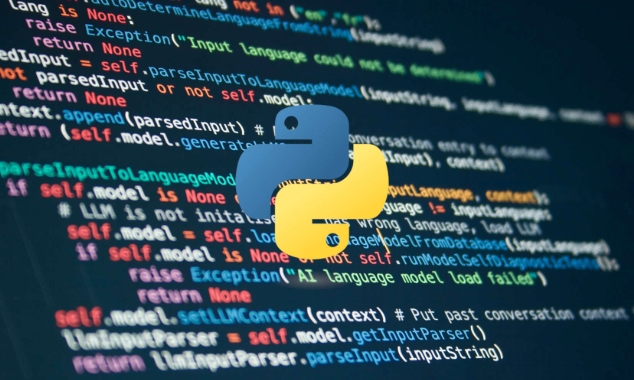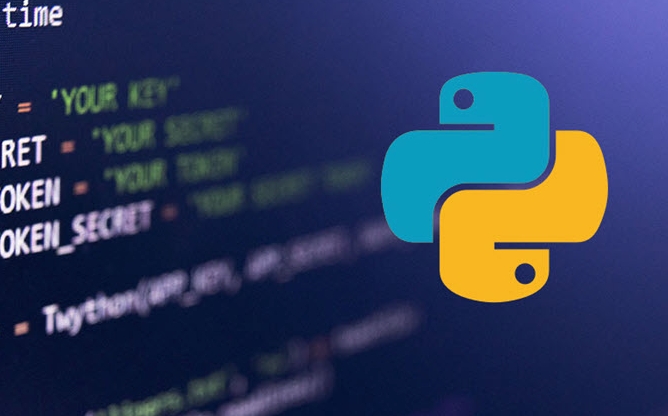super() is used in Python to call the parent class's methods, and its core role is to return a temporary superclass object to call its methods. 1. It avoids hard-coded parent class names to improve code maintainability; 2. Automatically follow method parsing order (MRO) in multiple inheritance to ensure that all initialization methods are called correctly once; 3. It is often used to extend rather than completely replace parent class behavior, such as preserving the original logic through super().append() when customizing list classes; 4. Best practices include always calling super(), maintaining call consistency, and note that super() can be used without passing parameters in Python 3.

When you see super() in Python, it's a way to call methods from a parent class—especially useful in inheritance. It helps avoid hard-coding the parent class name, making your code more maintained and less error-prone, especially in complex inheritance scenarios.

What does super() actually do?
At its core, super() returns a temporary object of the superclass, allowing you to call its methods. This is especially handy when you're overriding a method in a child class but still want to use the logic from the parent class.
For example:

class Parent:
def __init__(self):
print("Parent initialized")
class Child(Parent):
def __init__(self):
super().__init__()
print("Child initialized") When you create an instance of Child , both messages will be printed. Here, super().__init__() calls the __init__ method of Parent before proceeding with the rest of the Child 's initialization.
This pattern is widely used in object-oriented programming to extend or customize behavior without completely replacing it.

Why use super() instead of calling the parent directly?
You might wonder why not just write Parent.__init__(self) instead of using super() . The answer lies in flexibility and maintenance:
- Avoids hardcoding class names : If you change the class hierarchy, you won't have to manually update every reference.
- Supports multiple inheritance : When dealing with multiple base classes,
super()follows the Method Resolution Order (MRO) automatically, which can get complicated to manage manually.
For example, with multiple inheritance:
class A:
def __init__(self):
print("A init")
class B(A):
def __init__(self):
super().__init__()
print("B init")
class C(A):
def __init__(self):
super().__init__()
print("C init")
class D(B, C):
def __init__(self):
super().__init__()
print("D init") Creating an instance of D will print:
A init C init B init D init
This shows that super() doesn't just go up one level—it follows a specific order based on the class hierarchy (called MRO), which ensures all initializers are called exactly once.
How to use super() in practice
In real-world applications, super() is often used in frameworks like Django or Flask where you're subclassing built-in classes and need to preserve their behavior while adding your own.
Here's a simple practical example: customizing a list-like class.
class MyList(list):
def append(self, value):
if value < 0:
raise ValueError("Negative values ??not allowed")
super().append(value) In this case, we're extending the built-in list.append() method by adding validation, but still using the original behavior via super() .
Another common usage is in initializing GUI components in libraries like Tkinter or PyQt, where you need to run the parent class setup before adding your custom widgets or logic.
A few gotchas and best practices
- Always call
super()unless you really mean to skip it – especially in__init__, otherwise you may miss important setup steps. - Use it consistently across the class hierarchy – mixing explicit parent calls and
super()can break the MRO chain. - In Python 3, you don't need arguments –
super()without parameters works fine inside methods. In older versions (Python 2), you had to pass class and instance likesuper(ClassName, self).
That's basically how super() works in Python — not magic, just smart delegation. It makes managing inheritance easier, especially as your class hierarchies grow.
The above is the detailed content of What is super() in Python?. For more information, please follow other related articles on the PHP Chinese website!

Hot AI Tools

Undress AI Tool
Undress images for free

Undresser.AI Undress
AI-powered app for creating realistic nude photos

AI Clothes Remover
Online AI tool for removing clothes from photos.

Clothoff.io
AI clothes remover

Video Face Swap
Swap faces in any video effortlessly with our completely free AI face swap tool!

Hot Article

Hot Tools

Notepad++7.3.1
Easy-to-use and free code editor

SublimeText3 Chinese version
Chinese version, very easy to use

Zend Studio 13.0.1
Powerful PHP integrated development environment

Dreamweaver CS6
Visual web development tools

SublimeText3 Mac version
God-level code editing software (SublimeText3)

Hot Topics
 How does Python's unittest or pytest framework facilitate automated testing?
Jun 19, 2025 am 01:10 AM
How does Python's unittest or pytest framework facilitate automated testing?
Jun 19, 2025 am 01:10 AM
Python's unittest and pytest are two widely used testing frameworks that simplify the writing, organizing and running of automated tests. 1. Both support automatic discovery of test cases and provide a clear test structure: unittest defines tests by inheriting the TestCase class and starting with test\_; pytest is more concise, just need a function starting with test\_. 2. They all have built-in assertion support: unittest provides assertEqual, assertTrue and other methods, while pytest uses an enhanced assert statement to automatically display the failure details. 3. All have mechanisms for handling test preparation and cleaning: un
 How can Python be used for data analysis and manipulation with libraries like NumPy and Pandas?
Jun 19, 2025 am 01:04 AM
How can Python be used for data analysis and manipulation with libraries like NumPy and Pandas?
Jun 19, 2025 am 01:04 AM
PythonisidealfordataanalysisduetoNumPyandPandas.1)NumPyexcelsatnumericalcomputationswithfast,multi-dimensionalarraysandvectorizedoperationslikenp.sqrt().2)PandashandlesstructureddatawithSeriesandDataFrames,supportingtaskslikeloading,cleaning,filterin
 What are dynamic programming techniques, and how do I use them in Python?
Jun 20, 2025 am 12:57 AM
What are dynamic programming techniques, and how do I use them in Python?
Jun 20, 2025 am 12:57 AM
Dynamic programming (DP) optimizes the solution process by breaking down complex problems into simpler subproblems and storing their results to avoid repeated calculations. There are two main methods: 1. Top-down (memorization): recursively decompose the problem and use cache to store intermediate results; 2. Bottom-up (table): Iteratively build solutions from the basic situation. Suitable for scenarios where maximum/minimum values, optimal solutions or overlapping subproblems are required, such as Fibonacci sequences, backpacking problems, etc. In Python, it can be implemented through decorators or arrays, and attention should be paid to identifying recursive relationships, defining the benchmark situation, and optimizing the complexity of space.
 How can you implement custom iterators in Python using __iter__ and __next__?
Jun 19, 2025 am 01:12 AM
How can you implement custom iterators in Python using __iter__ and __next__?
Jun 19, 2025 am 01:12 AM
To implement a custom iterator, you need to define the __iter__ and __next__ methods in the class. ① The __iter__ method returns the iterator object itself, usually self, to be compatible with iterative environments such as for loops; ② The __next__ method controls the value of each iteration, returns the next element in the sequence, and when there are no more items, StopIteration exception should be thrown; ③ The status must be tracked correctly and the termination conditions must be set to avoid infinite loops; ④ Complex logic such as file line filtering, and pay attention to resource cleaning and memory management; ⑤ For simple logic, you can consider using the generator function yield instead, but you need to choose a suitable method based on the specific scenario.
 What are the emerging trends or future directions in the Python programming language and its ecosystem?
Jun 19, 2025 am 01:09 AM
What are the emerging trends or future directions in the Python programming language and its ecosystem?
Jun 19, 2025 am 01:09 AM
Future trends in Python include performance optimization, stronger type prompts, the rise of alternative runtimes, and the continued growth of the AI/ML field. First, CPython continues to optimize, improving performance through faster startup time, function call optimization and proposed integer operations; second, type prompts are deeply integrated into languages ??and toolchains to enhance code security and development experience; third, alternative runtimes such as PyScript and Nuitka provide new functions and performance advantages; finally, the fields of AI and data science continue to expand, and emerging libraries promote more efficient development and integration. These trends indicate that Python is constantly adapting to technological changes and maintaining its leading position.
 How do I perform network programming in Python using sockets?
Jun 20, 2025 am 12:56 AM
How do I perform network programming in Python using sockets?
Jun 20, 2025 am 12:56 AM
Python's socket module is the basis of network programming, providing low-level network communication functions, suitable for building client and server applications. To set up a basic TCP server, you need to use socket.socket() to create objects, bind addresses and ports, call .listen() to listen for connections, and accept client connections through .accept(). To build a TCP client, you need to create a socket object and call .connect() to connect to the server, then use .sendall() to send data and .recv() to receive responses. To handle multiple clients, you can use 1. Threads: start a new thread every time you connect; 2. Asynchronous I/O: For example, the asyncio library can achieve non-blocking communication. Things to note
 How do I slice a list in Python?
Jun 20, 2025 am 12:51 AM
How do I slice a list in Python?
Jun 20, 2025 am 12:51 AM
The core answer to Python list slicing is to master the [start:end:step] syntax and understand its behavior. 1. The basic format of list slicing is list[start:end:step], where start is the starting index (included), end is the end index (not included), and step is the step size; 2. Omit start by default start from 0, omit end by default to the end, omit step by default to 1; 3. Use my_list[:n] to get the first n items, and use my_list[-n:] to get the last n items; 4. Use step to skip elements, such as my_list[::2] to get even digits, and negative step values ??can invert the list; 5. Common misunderstandings include the end index not
 Polymorphism in python classes
Jul 05, 2025 am 02:58 AM
Polymorphism in python classes
Jul 05, 2025 am 02:58 AM
Polymorphism is a core concept in Python object-oriented programming, referring to "one interface, multiple implementations", allowing for unified processing of different types of objects. 1. Polymorphism is implemented through method rewriting. Subclasses can redefine parent class methods. For example, the spoke() method of Animal class has different implementations in Dog and Cat subclasses. 2. The practical uses of polymorphism include simplifying the code structure and enhancing scalability, such as calling the draw() method uniformly in the graphical drawing program, or handling the common behavior of different characters in game development. 3. Python implementation polymorphism needs to satisfy: the parent class defines a method, and the child class overrides the method, but does not require inheritance of the same parent class. As long as the object implements the same method, this is called the "duck type". 4. Things to note include the maintenance






